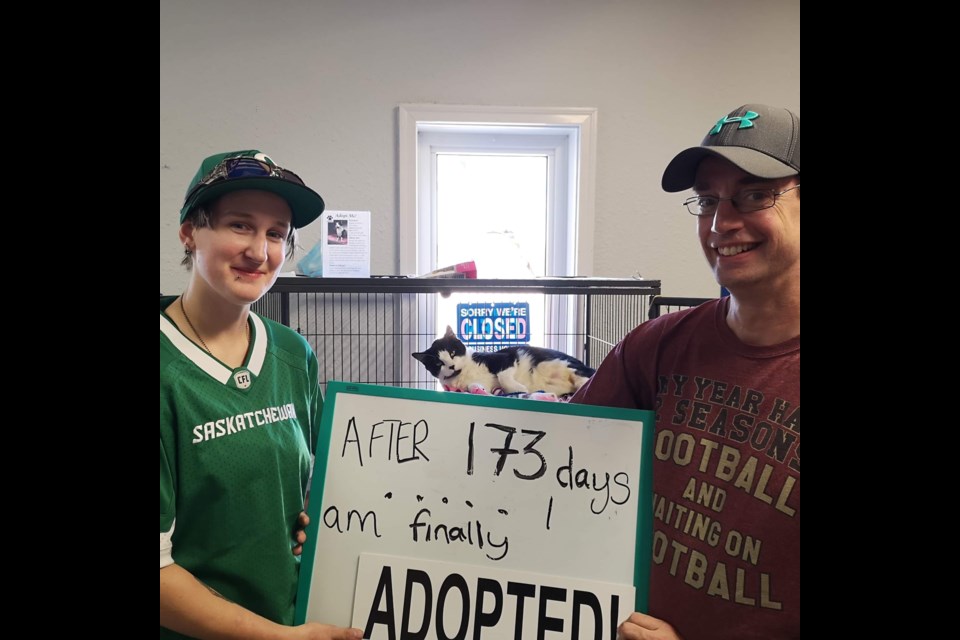The Moose Jaw Humane Society’s longest-running resident, Rainbow, was finally adopted yesterday after 173 consecutive days in the shelter, but there are many other animals that still need someone to take them home too.
Rainbow’s stay was abnormally long, said Amanda Tetarenko from the Humane Society, especially considering that she spent some time out of the shelter once already, bringing her total days in their care to over 270.
The most common reason that both dogs and cats stay in the shelter for so long is they have special care needs that can seem intimidating to potential adopters, such as medical conditions or specific household requirements.
Tetarenko assures people that “special care needs” isn’t as scary as it sounds.
“They are wonderful animals, and if they come with special needs, it’s just like people,” said Tetarenko. “Don’t be immediately put off when you see there's a special need on an animal because it doesn't mean it’s going to be harder to take care of them — it could be something as little as don’t change their diet from this.”
For Rainbow, it meant a specific brand of cat food and a prescribed steroid pill once every three days.
Special needs don’t hinder the adoption process. It really just means a few extra minutes of instruction for the new family before they can take their furry friend home.
Adopting long-term residents is really best for the animal, although there are other ways to help them find their forever home. One of those ways is a sponsored adoption, which anyone can drop by the shelter and do for any animal.
Rainbow was a sponsored adoption cat, which means that someone came in and paid the adoption fees for Rainbow, so that whoever decided to take her home wouldn’t have to.
Long stays can be hard on the animal, and sponsored adoption often helps them find a family, and returning to the shelter can also be tough for any animal.
“(We want people to) fully understand the commitment they’re making, because the worst thing for us and for an animal is for them to go out and then come back again. (The animal) doesn’t understand that,” said Tetarenko.
The Humane Society currently has around 40 cats and just under 30 dogs in its care, some of which are not at the shelter and instead in foster homes. It still has a few kittens and is expecting a litter of puppies any day.
Although the little pups and kittens are adorable, remember to look at the older animals too — they come with their own wonderful quirks.




